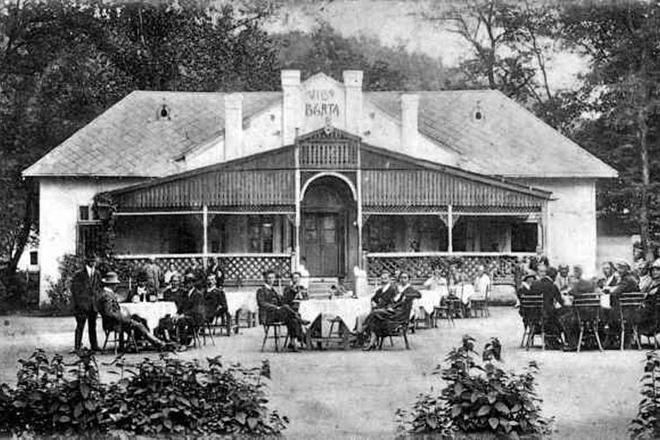In 1723, Matej Bel, a noted polymath, listed 137 spa towns and baths across Slovakia. Today, only 22 remain. This dramatic decline is not due to a loss of mineral springs, but rather to the disappearance of the spas themselves.
Over time, bathhouses sprang up in many towns and villages, though only the largest have endured. As most spas have long since vanished or fallen into ruin, historical postcards are often the only means of preserving the memory of their beauty and elegance. These establishments were typically frequented by local nobility and prominent guests from abroad.
One such complex stood in Hodejov, a village in the Gemer region of south-central Slovakia. The spa featured notable wooden decorations on its façade – such ornamented colonnades were once common, though none have survived.
The spring, located near the Gortva River, produced naturally carbonated, iron-rich water at around 19 °C. During spring, high water levels would occasionally submerge the source.
The exact date of the spa’s founding remains uncertain, though records confirm its existence by the first half of the 19th century. By 1913, it had grown popular enough to host 7,400 guests. Advertisements boasted that it was the only spa in Greater Hungary to employ the Lahmann methods – named after a German doctor who championed the healing powers of minerals, fresh air, morning exercise, wholesome food, and hydrotherapy.
Ambitious plans to build a spa village beneath the nearby castle were cut short by the outbreak of the First World War. The entire complex was ultimately destroyed during the Second World War.
The postcard accompanying this article dates from the 1920s.
This article was first published by The Slovak Spectator on July 7, 2008. It has been updated to be relevant today.


